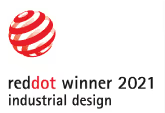Design aids understanding
As we have all been watching the unfolding tragedy in Japan, newscasters have struggled to communicate the fast-moving events in ways that the public can understand. Are the nuclear reactors a threat? What is really happening? What does it mean that the fuel rods have been damaged? Many Americans’ concept of a fuel rod conjures an image of Homer in the opening credits of “The Simpsons,” bumbling around with a glowing green rod that bounces through the sequence of scenes.
With that visual reference embedded in the public’s collective subconscious, it’s quite understandable that when a very real tragedy involving fuel rods catching fire takes place, journalists would struggle for days to communicate the situation. Video cameras have their limits—they can only show the smoldering fires at distance in these situations.
In a recent discussion with Dr. Jon Bohlmann, a North Carolina State University marketing professor, I learned the value of design in this situation (and I’m always eager to hear different ways that design brings value to life). Professor Bohlmann noted that it wasn’t until the Wall Street Journal’s graphic designers were able to illustrate the evolving state of the fuel rods(based on press updates coming from the Japanese government) that clarity began to emerge. As of this posting, the situation in Japan is still very fluid, but the public’s reaction of the unfolding events is calming down, with design playing a prominent role in bringing understanding through solid visual tools.
Dr. Bohlmann drew a very apt analogy to show the value of design in the product development process. Product development is a chaotic process in which teams composed of representatives from different functional groups--marketing, engineering, sales, finance, legal, and design--are all trying to make sense of complex problems and make decisions based on imperfect information. A hurdle of particular difficulty that these teams must clear is mustering the ability to gather rich insights on the customer and then communicate those insights to the rest of the development team. As visual scribes, designers can efficiently capture complex details through sketches that can produce clarity in an otherwise chaotic attempt by multiple parties to communicate verbally. In other words, sometimes words themselves just won’t do, and that’s when designers earn their pay.
Of even greater value within the designer’s toolkit is his proficiency in creating prototypes or models that serve as discussion aids (like the illustration below) that prompt customers to articulate their problems at much deeper levels than those achieved by traditional methods of market research.

The above illustration is a simple discussion aid used in a focus group to capture insights around a sensitive topic. Customers are asked where on their bodies they would be willing to wear a medical device on the left side of the page, and on the right, where would they not want to wear a device. This tool not only allowed customers to more deeply express their preferences, but the completed forms were a powerful tool in communicating the voice of the customer to the rest of the development team.
While we all enjoy a great cartoon, let’s be grateful for the other graphics people of the professional world, from graphic designers to industrial designers.


